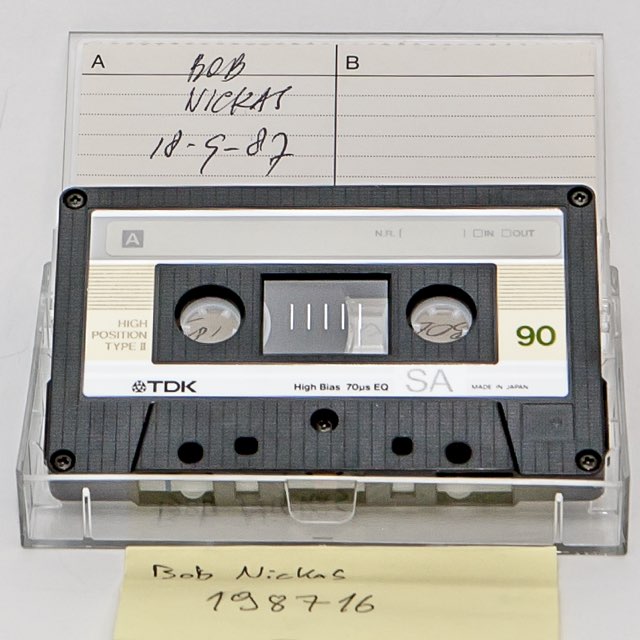The Art of the Real
05–19.09.1987
de Appel, Prinseneiland 7, Amsterdam
de Appel, Prinseneiland 7, Amsterdam
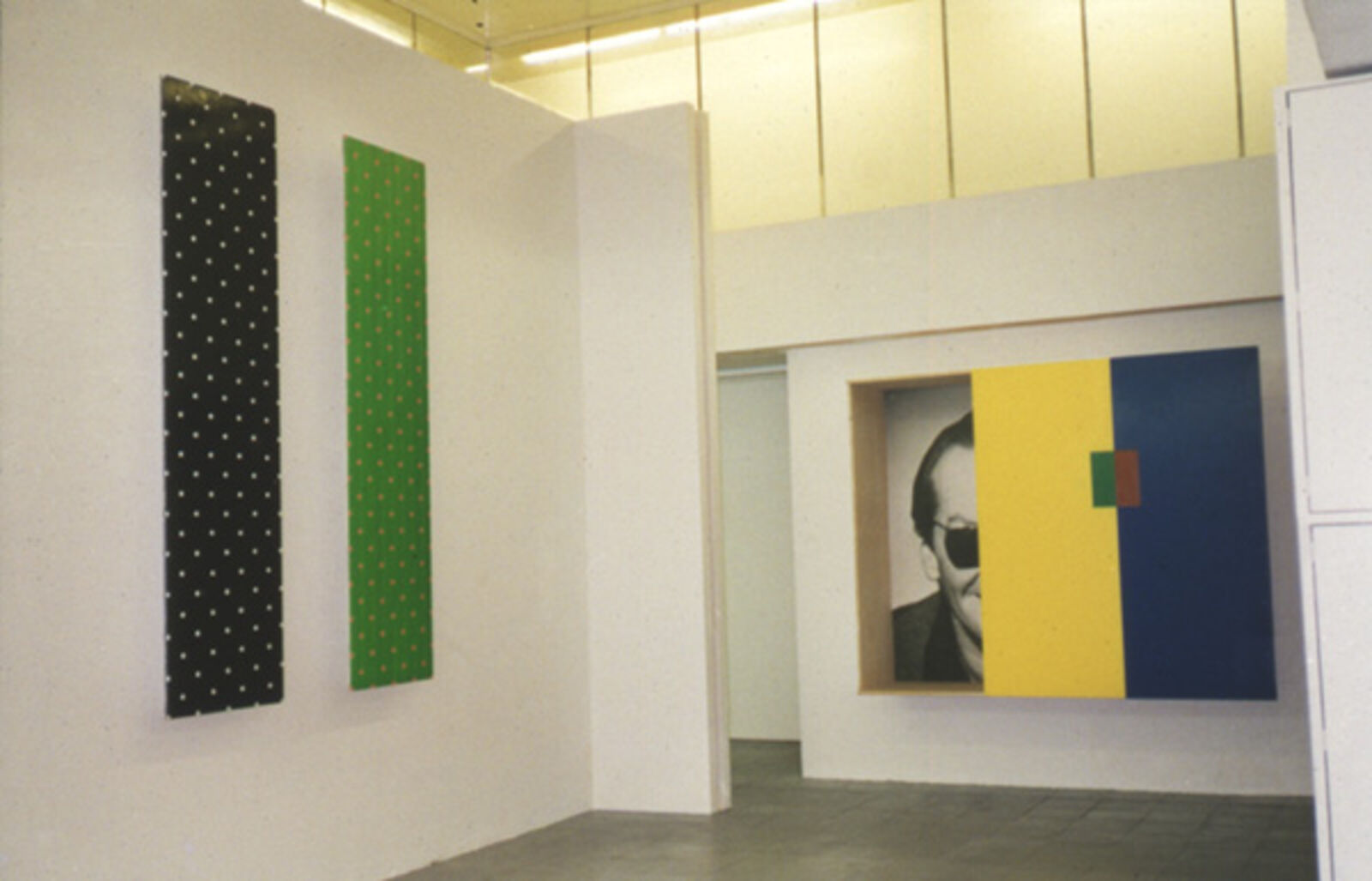
left: Peter Hopkins, It's a small World, 1987 and Alive with Pleasure, 1987; right: Wallace & Donohue, Fucking as the Public Mind, 1987
© Hans Sonneveld
© Hans Sonneveld
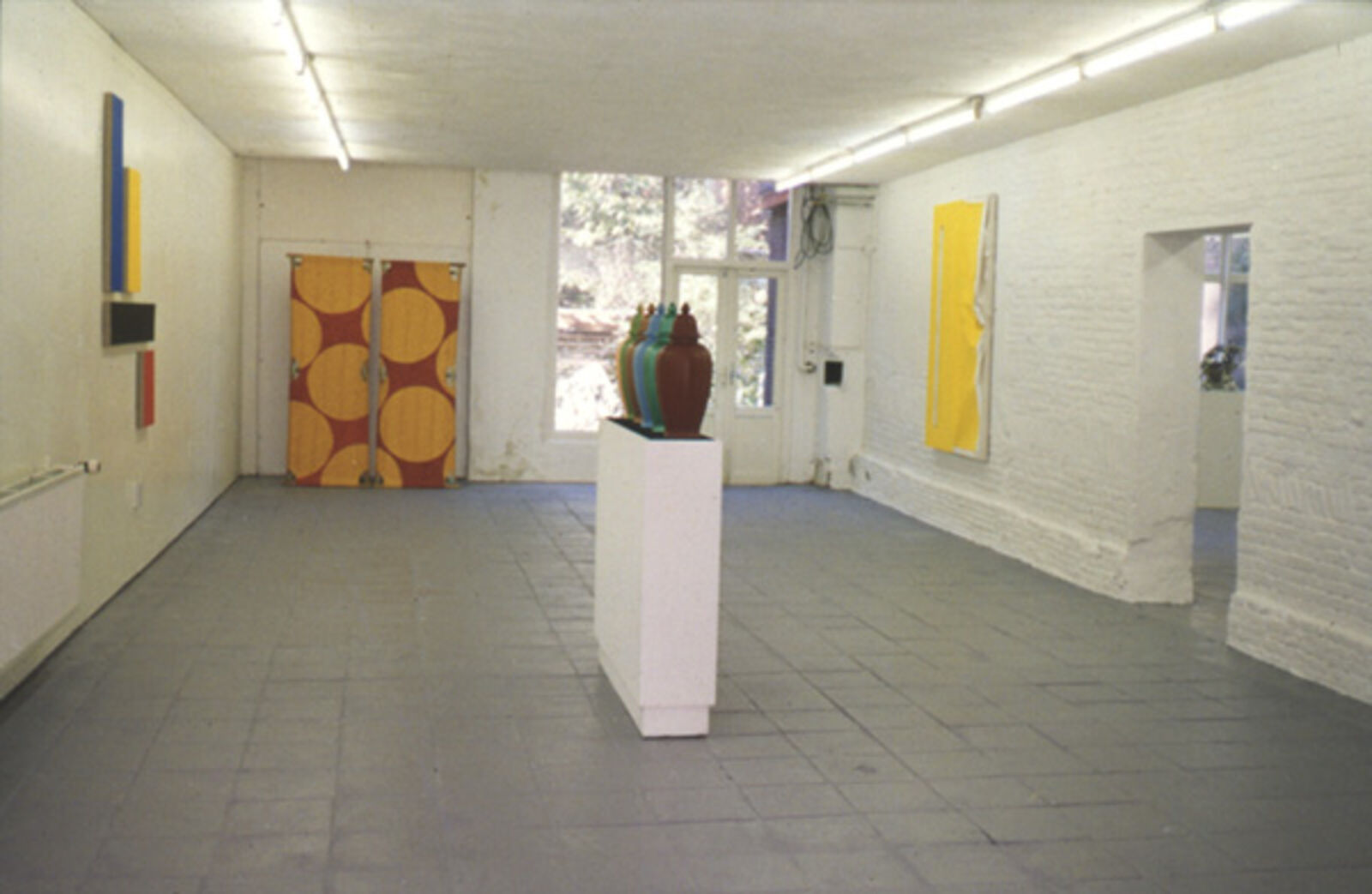
front: Allan McCollum, Perfect Vehicles, 1986; back: Beth Brenner, Sierra Madre, 1987
© Hans Sonneveld
© Hans Sonneveld
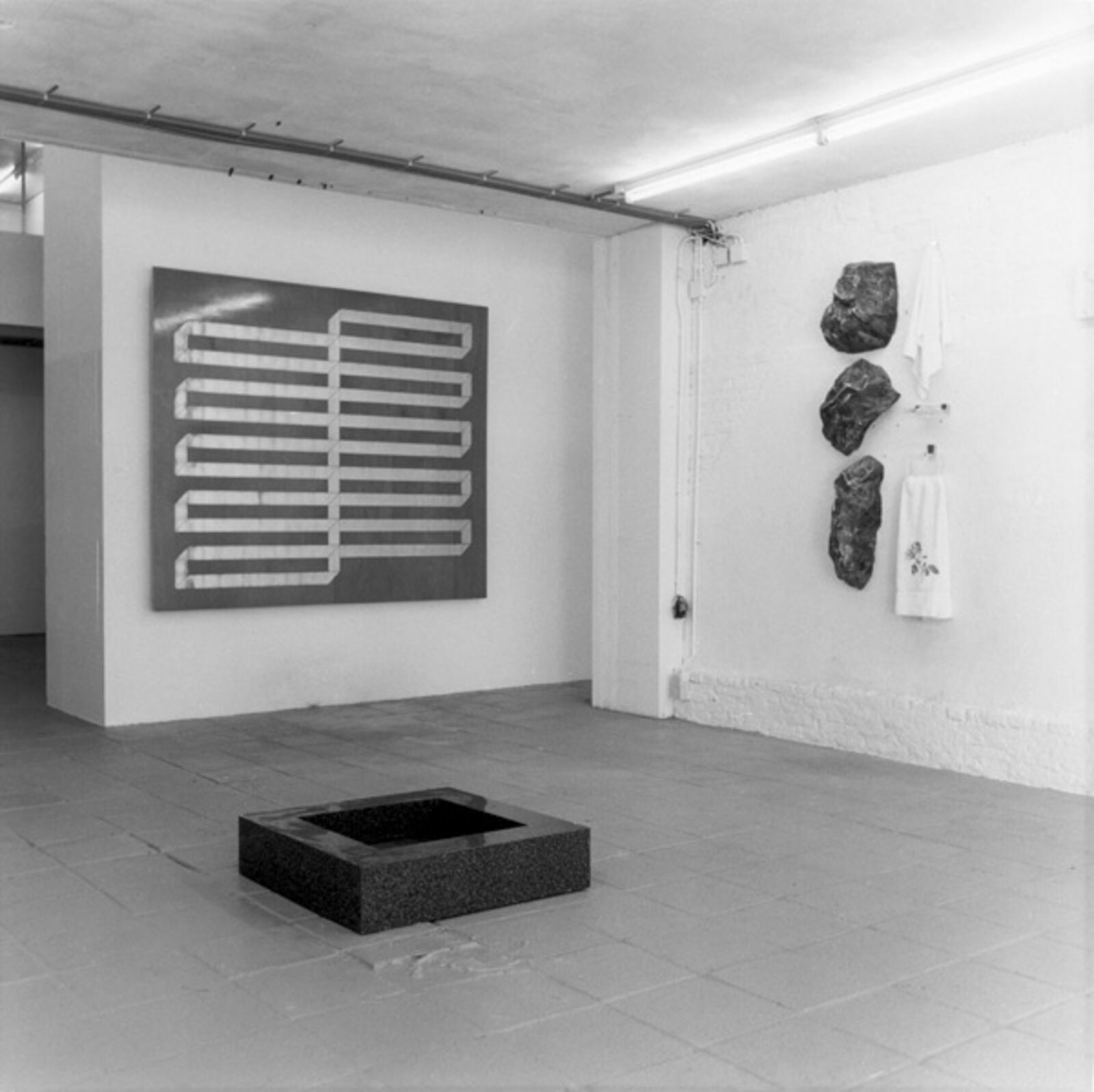
f.f.t.b.: Matthew McCaslin, Trident, 1985; Mark Stahl, Chain Gang, 1987; Christian Eckard, Illumination Gray, 1987
© Hans Sonneveld
© Hans Sonneveld
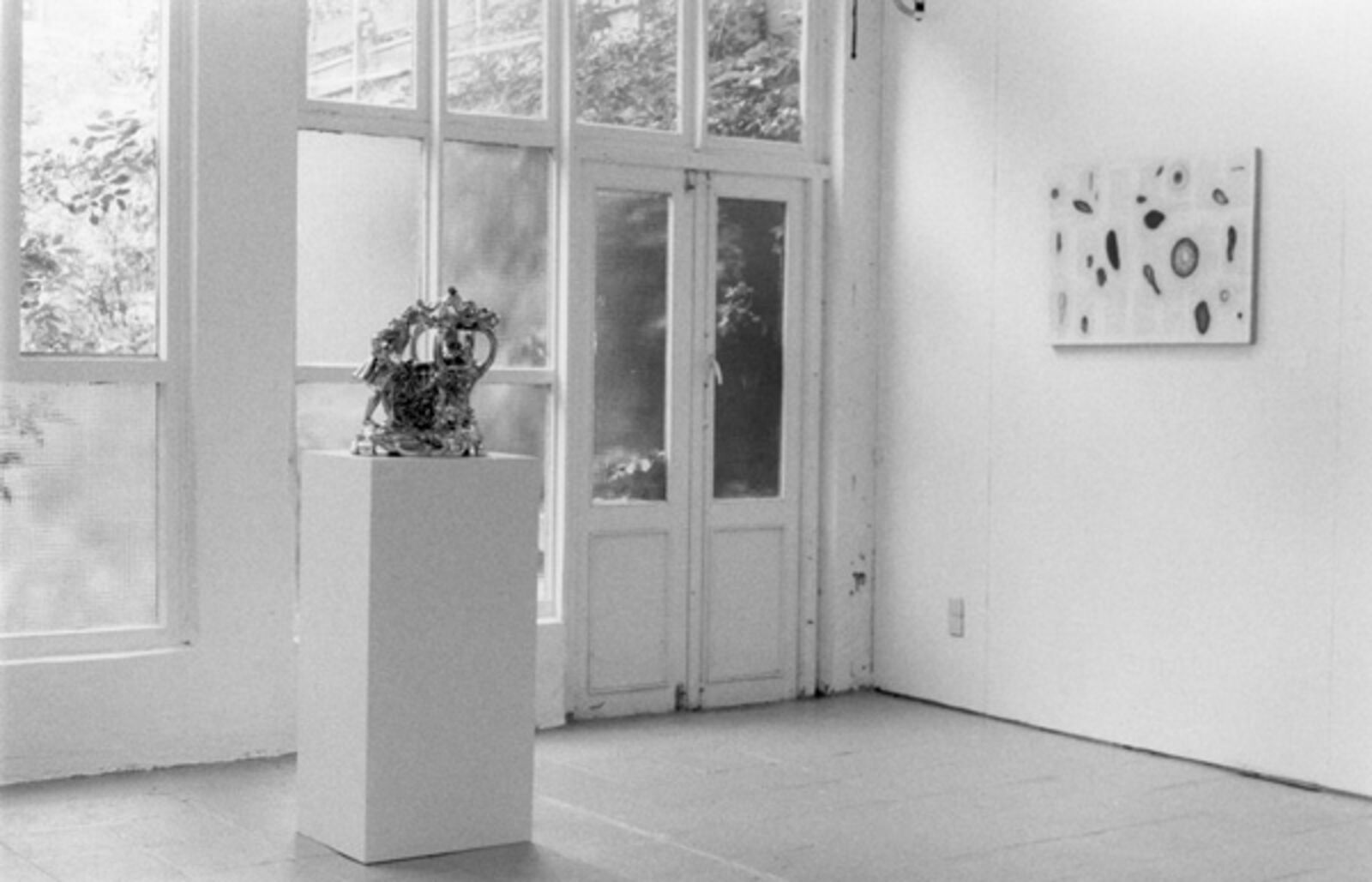
left: Jeff Koons, French Coach Couple, 1986; right: Tim Rollins & K.O.S., The Red Badge of Courage VII, 1987
© Hans Sonneveld
© Hans Sonneveld
‘For two weeks in September De Appel showed the very latest art from New York in an exhibition entitled The Art of the Real organised by freelance curator Robert Nickas for a tour of Europe (including Lyon and Geneva). Like Dan Cameron 's Art and its Double, the exhibition combined work known as 'consumer fetish', such as that of Mc Collum and Koons, with 'neo geo' artists such as Schuyff, Eckhart and Wallace & Donohue. Nickas, who gave a short talk about his project on September 18, had taken the title 'Art of the Real' from Goossen's exhibition in 1968 at the Museum of Modern Art in New York. Nickas refers frequently to Goossen in his catalogue introduction, criticising him for only including minimal art at the time and not Op and Pop art. All manner of styles are combined in this new presentation, a clear indication of the influence of postmodernism on the aesthetics of today's 'curators'.
‘This was a landmark exhibition of Minimal art, including works by Donald Judd, Ellsworth Kelly, Sol LeWitt, Barnett Newman, Ad Reinhardt, Robert Smithson, and Frank Stella. In his preface to the catalogue Goossen wrote: ‘It would have been possible to include here examples of pop art, but they would have been visually distracting in this context; op art has also made a major contribution but it too would have introduced unnecessary complications.’ Such precautions […] have not been taken for this show There are numerous realisms being explored today from geometric abstraction and object-type painting, through the re-presentation of objects and images and a new kind of ready-made to the use of synthetic or industrial materials. But even a broad selection of works can only begin to suggest the extent to which artists once gain ‘confront the experiences and objects we encounter every day’. Writing in 1968, Goossen wondered if such ‘confrontations with the actual’ could be sustained, but today this is neither possible to claim for the Minimal artists of the 1960s nor for the agendas of contemporary artists. The recent 'renewed' interest in abstraction, ready-mades, geometry, opticality, Pop, Minimal, and Conceptual art has little to do with something being sustained if we understand that to mean an investment in maintaining ‘the state of things’. That younger artists have been producing works informed by the art of the 1960s, the art they grew up with, is not surprising. However, to imagine a clean and unbroken line extending between the intentions and results of artists in the 60s and artists today is simply to verge on the hallucinatory. While it is obvious that there is an understanding of the strategies and attitudes, of the successes and failures of those earlier movements on the parts of artists working today, it is that understanding which propels their works beyond simple 'reference and simulation', two terms you will not again encounter in this text - or revival. The recent renewal of interest in more reductive and intellectual forms of art began, in part, with the work of artists such as Peter Halley, Sherrie Levine, Haim Steinbach and Philip Taaffe in the early 1980s. Works which vividly called into question notions of authority and originality via strategies of appropriation, such as those of Levine and Taaffe, can now be seen as central to the attention paid a whole range of styles and periods in recent years, though the appropriative gestures of these and other artists remain largely misunderstood. With works that do not directly quote from others but readily call ‘others’ to mind, the viewers must summon the memory of those objects for themselves; they must in effect become their own appropriators. As Goossen wrote in 1968: ‘the contemporary artist labors to make art itself believable. Consequently the very means of art have been isolated and exposed, forming the spectator to perceive himself in the process of his own perception.’ Nearly twenty years later, this same idea is at the center of much of the work before us today, specifically as an operative principle without which many of the artists in this exhibition would be unwilling to proceed. In the 1960s a work that was ‘site specific’ was one made for a particular location, often constructed within a given or chosen space or outdoors such as an earthwork. These works were not easily exhibited more than once, and even then only for an allotted period of time, after which many no longer existed. If in the 1980s we can again speak of site specificity, it is in terms of the site a work creates for the viewer and what takes place ‘there’, rather than in terms of its actual location.’ (Robert Nickas)
Many questions were raised during the discussion afterwards, particularly about the marketability (easy to install or hang up) and manageability (nice little works easy to transport) that seems to typify many of these exhibitions put together for Europe. For those who only saw it as ‘shoppers art’, the question remained as to wether it really worked in De Appel as it was not for sale. Can certain types of art lose their power in a non-commercial context? A lady from the audience continued to ask whether there was anything new in these works, a question that made Nickas' hair stand on end and to which he kept replying that he had never used the word 'new'. Of course the role of the avant-garde was at issue here, with the question of progress in art as the underlying motif. Nickas emphasised that he knew all the artists well and had asked them to make works specially for the exhibition and that he had accepted the works even when they turned out differently than he had expected (as with Koons). Nickas was also asked why exhibitions are so often made nowadays with already existing titles, like another one he recently made in Chicago called Primary Structures. In answering he twice quoted Lawrence Weiner who had said to him that ‘young artists should not carry the burden of older artists’ past’. Nevertheless in the Rhona Hoffman Gallery in Chicago Judd and Ryman could be found hanging next to Eckhart and Taaffee (Bridget Riley, to whom Taaffee refers apparently consistently refuses to participate in these new generation confrontations) and in December at Sonnabend Gallery in New York artists such as Judd and Taaffee will be included in a similar presentation. Meanwhile Nickas is preparing an exhibition about 'neo-pop' for the Hans Meyer Gallery in Cologne, for which he will no doubt find a suitable title.’ (‘The Remake of the Real’, De Appel, 7 (1987) 2, pp. 15-17.)
